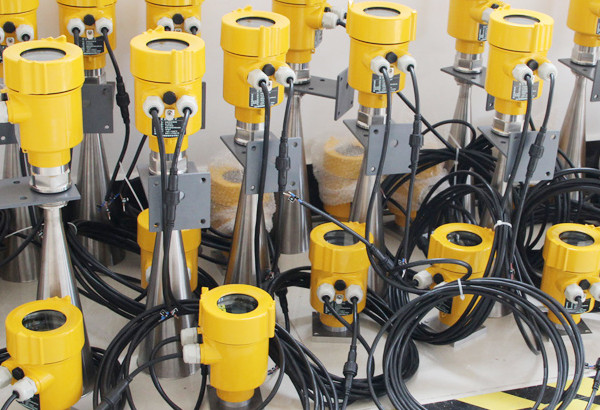Globally, environmental pollution is becoming increasingly serious, and governments and organizations are taking active measures to reduce the impact of pollution.
In this battle against pollution, technological progress plays an indispensable role. Especially in monitoring and controlling industrial emissions, the application of high-tech instruments has greatly improved the efficiency and effectiveness of pollution control.
Among them, radar level meters play a key role as “environmental guardians” in pollution control with their high accuracy, reliability and easy maintenance.

Radar level meters use the reflection principle of electromagnetic waves to measure the liquid level of objects. It emits radar waves of a certain frequency, which are reflected back when they encounter the surface of the material.
By analyzing the time difference or frequency change of the reflected signal, the radar level meter can accurately calculate the level height.
This measurement method is not affected by environmental factors such as medium changes, temperature fluctuations, steam or dust, ensuring accurate measurement under various complex conditions.

In many industries such as sewage treatment, petrochemicals, and pharmaceuticals, radar level meters are used to accurately measure and control the liquid level during the treatment process.
For example, in the sewage treatment process, real-time monitoring of the liquid level in the sewage pool can ensure the continuity and stability of the treatment process, and avoid environmental pollution accidents such as reduced treatment efficiency or sewage overflow caused by abnormal liquid level. By accurately controlling the liquid level, radar level meters also help optimize energy use and reduce emissions.
For example, in the desulfurization process of a power plant, by maintaining an appropriate absorbent level, the sulfur component in the exhaust gas can be absorbed to the maximum extent, thereby reducing the formation of acid rain and air pollution.
Similarly, in the water treatment process, proper control of the amount of chemicals added can not only ensure the treatment effect, but also reduce the consumption and residue of chemicals and avoid secondary pollution.

With the continuous advancement of technology, the performance of radar level meters will continue to improve, and their application in pollution control will become more extensive and in-depth.
The integrated intelligent monitoring system, higher precision measurement capabilities, stronger environmental adaptability and other characteristics will enable radar level meters to play a more critical role in the future environmental protection cause.
Combined with the Internet of Things technology, radar level meters can realize remote monitoring and data analysis, and provide more rapid and effective data support for pollution prevention and response. As a “guardian” in the field of environmental protection, the importance of radar level meters in pollution control is self-evident.
It not only provides an efficient and reliable means of measurement, but also provides strong technical support for achieving environmental protection goals.
With the enhancement of global awareness of environmental protection and the continuous advancement of technology, the application of radar level meters will be more extensive, making greater contributions to creating a cleaner and greener earth environment.
